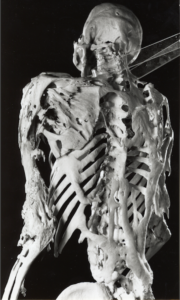I was asked to give the keynote talk at “Science, Journalism, and Democracy: Grappling With A New Reality” at Rockefeller University on September 6, 2017 (video). This is what I said.
We’re here at this meeting to talk about science, journalism, and democracy. So let me begin by telling you about a newspaper article on a scientific experiment, an experiment that would end up having a major influence on government policy on a vital issue.
The vital issue was food. The experiment was carried out on wheat. Some varieties of wheat are known as spring wheat. They’re planted in the spring and grow soon afterwards. Winter wheat, on the other hand, is planted in the fall but does not produce its flowers till the spring. Winter wheat has the advantage of a much bigger yield. But there’s a catch. Continue reading “Let’s Not Lose Our Minds”

